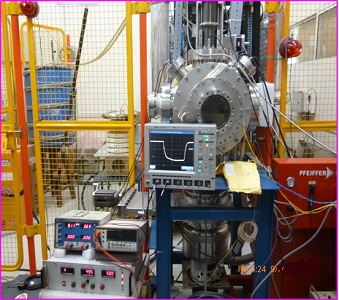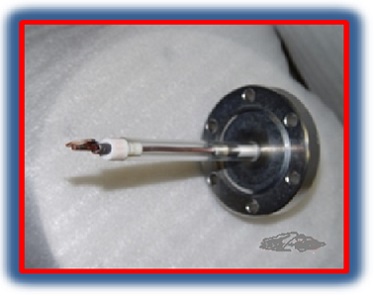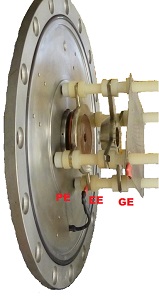| Proton Linac Development Division |
 |
|
Filament Arc Discharge Based Multi-cusp Negative Hydrogen Ion Source
A filament arc discharge based multi-cusp negative hydrogen ion source has been indigenously designed and developed by Ion Source Development and Diagnostics Section of PLDD. It will be used as an injector to the front end of H- Linac for Indian Facility for Spallation Research (IFSR) applications.
A high voltage ignitor electrode has been developed and introduced to create the background glow discharge hydrogen plasma inside the multicusp plasma chamber by floating ignition electrode at -5.5 kVDC at ~ 2 mA current. With this arrangement, filament can be operated in cold conditions. This not only reduces the power requirement of filament heating, but also reduces continuous erosion and sputtering of filament. Thus, it significantly enhances the operation lifetime of filament. The main hydrogen plasma is created by pulsed arc discharge with maximum of 100 A current. The ion beam is accelerated by floating the plasma chamber at -50 kV DC potential with respect to the ground electrode. Negative hydrogen ion beam is accelerated towards the ground electrode. This ion source is operated in pulsed arc mode and negative hydrogen ion beam extracted using three electrode extraction system. The plasma chamber is isolated from extraction chamber with two high voltage isolator disks made of Metlon (50 mm thick) and PVDF (80 mm thick) and voltage divider high voltage resistors. It enables to operate the ion source at -50 kV potential. The vacuum level in the extraction chamber is maintained at 8.0 x 10-5 mbar (approx.). A maximum of 12 mA negative hydrogen ion current has been extracted at 50 keV beam energy. It takes nearly 100 micro-sec time for the negative hydrogen ion beam signal to get stabilized. In order to avoid the thermal effects due to steering out of co-extracted electrons from the negative hydrogen ion beam and dumping them on extraction electrode, the ion source is operated at 2 Hz repetition rate.
|

Filament Arc Discharge Based Multi-cusp H- Ion Source

Ignition electrode for background glow discharge plasma

H- ion beam extraction geometry using plasma, extraction and ground electrodes

Multi-cusp Plasma Chamber

Plasma Chambers with glow discharge ignition system

Recorded waveform of 12 mA H- ion beam current
|
|
|






















